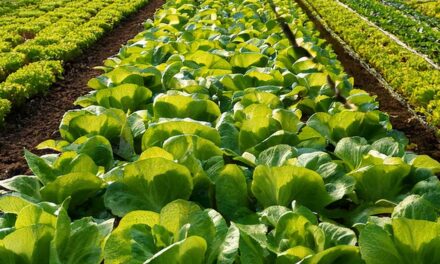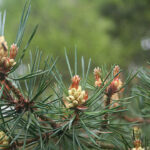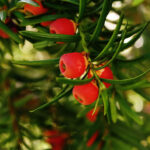
Silvery Needles and Violet Cones: The Korean Fir

The Korean fir is a distinctive evergreen species native to the high-altitude regions of South Korea. Known for its compact growth habit and striking ornamental features, it has become a popular choice in temperate gardens. Its unique combination of silvery needles and vibrant violet cones offers year-round interest and suitability for cultivated landscapes.
Botanical Characteristics of the Korean Fir
The Korean fir, Abies koreana, is a medium-sized evergreen, typically growing between 10 to 15 metres in height under cultivation, with a pyramidal shape and dense branching. Its compact size makes it an ideal choice for smaller gardens or as a specimen tree in temperate landscapes.
One of the most distinctive features of the Korean fir is its foliage. The needles are relatively short, measuring around 2–3 cm in length, and are arranged in a slightly curved pattern along the branches. The upper surface of the needle is dark green, while the underside is covered with a silvery-white stomatal band, creating a striking contrast that gives the tree a unique shimmering appearance, especially when illuminated by sunlight or frost. This feature also contributes to its ornamental appeal in winter, when many other evergreens appear more muted.
Image by F.D. Richard via Flickr / CC BY-SA 2.0
The cones of the Korean fir are another key characteristic. They emerge upright, in contrast to many other fir species whose cones droop. These cones are cylindrical, measuring around 5–8 cm in length, and are initially green before maturing to shades of violet, blue, or purple. The unusual colouration of the cones is a notable feature of the species, making them a distinctive element of the tree’s aesthetic. Notably, the cones develop early in the tree’s lifecycle, which is uncommon among fir species, adding interest from a young age
The tree’s bark is smooth and grey, with resin blisters that release a fragrant sap when disturbed. This characteristic is common among fir species but adds another sensory layer to the plant. The Korean fir is adapted to cooler climates and performs best in well-drained, acidic soils. Its native habitat in the mountainous regions of South Korea provides a clue to its environmental preferences: it thrives in areas with cold winters, mild summers, and consistent moisture.
Cultural and Christmas Significance
In horticulture, the Korean fir is valued for its manageable size and ornamental appeal, making it well-suited to small gardens or as a focal point in larger landscapes. Its cones and needle structure distinguish it from more commonly cultivated firs.
While it is not traditionally associated with Christmas in its native region, the Korean fir has gained recognition in temperate zones for its suitability as a living Christmas tree. Its compact size and symmetrical growth habit make it a practical choice for festive displays. Additionally, its introduction into gardens worldwide highlights its adaptability and versatility as a cultivated species.
The Korean fir is a distinctive species that combines ornamental appeal with adaptability to cooler climates. Its silvery needles and vividly coloured cones make it a valuable addition to cultivated landscapes. As interest in conifers with unique characteristics grows, the Korean fir continues to attract attention among horticulturists and gardeners alike.
Header image by W.Carter via Wikimedia / CC0 1.0 Universal














